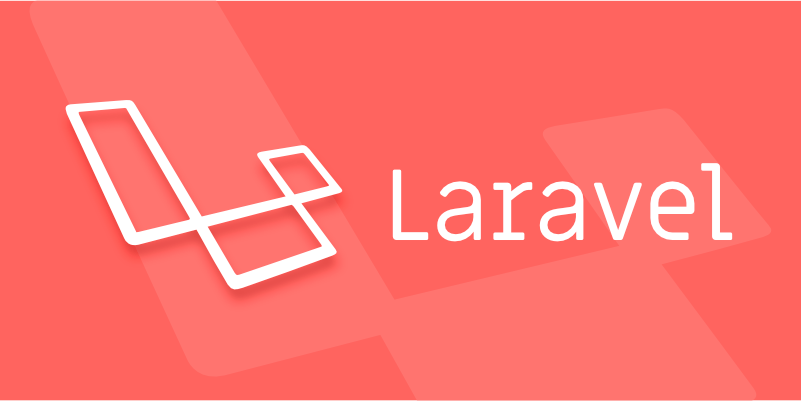Laravel Octane is useful for improving performance in high-traffic, low-latency, or real-time applications by keeping the Laravel framework loaded in memory using Swoole or RoadRunner. 1. It excels in high-traffic applications by reducing server load and response time through persistent application state. 2. It benefits APIs requiring low latency by eliminating per-request framework boot overhead. 3. It supports real-time features like WebSockets via Swoole’s built-in server for efficient connection handling. 4. It optimizes apps with expensive boot processes by avoiding repeated initialization. However, caution is needed with global state, static properties, and assumptions about request isolation, and proper process management is required, making it ideal for performance-critical applications but not always necessary for small, traditional sites.

Laravel Octane is a package that supercharges Laravel applications by serving them using high-performance application servers like Swoole or RoadRunner. Instead of booting the entire Laravel framework on every HTTP request (the traditional PHP-FPM model), Octane keeps your application loaded in memory and handles requests in a much faster, persistent way.

How Laravel Octane Works
Normally, when you make a request to a Laravel app:
- PHP starts up
- Laravel boots (loads config, service providers, etc.)
- The request is handled
- Everything is torn down
This happens on every single request, which introduces overhead.

Octane changes that by:
- Starting the Laravel app once when the server boots
- Keeping it in memory
- Reusing that loaded instance to handle thousands of requests
- Drastically reducing boot time and improving response speed
It does this using long-running processes powered by either:

- Swoole – an event-driven PHP extension
- RoadRunner – a Go-based PHP application server
When Is Laravel Octane Useful?
1. High-Traffic Applications
If your app handles many concurrent users or requests (e.g., APIs, SaaS platforms), Octane can significantly reduce response time and server load. Since the framework is already booted, responses are much faster—often 2-10x quicker than traditional setups.
2. APIs with Low Latency Requirements
For JSON APIs where milliseconds matter (like mobile backends or real-time dashboards), Octane helps eliminate the "boot overhead" on each request, leading to more consistent and predictable response times.
3. Real-Time Features (WebSockets, SSE)
Octane works well with Swoole’s built-in WebSocket server. If you're using Laravel WebSockets or broadcasting, running your app with Octane allows you to handle real-time connections efficiently in the same process.
4. Applications with Expensive Boot Processes
If your app registers many service providers, loads large configurations, or does heavy initialization, Octane avoids repeating that work on every request—saving CPU and memory over time.
Things to Watch Out For
While powerful, Octane isn't a drop-in replacement for all apps. Be cautious if:
- You rely on global state or static properties that aren’t reset between requests
- Your app assumes a fresh PHP process per request (e.g., some middleware or singletons)
- You use features incompatible with long-running processes (e.g., certain file uploads,
exit()calls, or blocking operations)
You’ll also need to manage the Octane server process (start/stop/reload), which is different from traditional PHP deployment.
In Summary
Laravel Octane is useful when:
- You want faster responses and better throughput
- You're building APIs or real-time apps
- You have high traffic or performance-sensitive workloads
It’s not always needed for small sites or traditional server-rendered apps using PHP-FPM, but for performance-critical Laravel applications, Octane can be a game-changer.
Basically, if speed and scalability matter, it’s worth trying—just test thoroughly to avoid surprises from shared state.
The above is the detailed content of What is Laravel Octane and when is it useful?. For more information, please follow other related articles on the PHP Chinese website!

Hot AI Tools

Undress AI Tool
Undress images for free

Undresser.AI Undress
AI-powered app for creating realistic nude photos

AI Clothes Remover
Online AI tool for removing clothes from photos.

Clothoff.io
AI clothes remover

Video Face Swap
Swap faces in any video effortlessly with our completely free AI face swap tool!

Hot Article

Hot Tools

Notepad++7.3.1
Easy-to-use and free code editor

SublimeText3 Chinese version
Chinese version, very easy to use

Zend Studio 13.0.1
Powerful PHP integrated development environment

Dreamweaver CS6
Visual web development tools

SublimeText3 Mac version
God-level code editing software (SublimeText3)

Hot Topics
 How to use PHP to build social sharing functions PHP sharing interface integration practice
Jul 25, 2025 pm 08:51 PM
How to use PHP to build social sharing functions PHP sharing interface integration practice
Jul 25, 2025 pm 08:51 PM
The core method of building social sharing functions in PHP is to dynamically generate sharing links that meet the requirements of each platform. 1. First get the current page or specified URL and article information; 2. Use urlencode to encode the parameters; 3. Splice and generate sharing links according to the protocols of each platform; 4. Display links on the front end for users to click and share; 5. Dynamically generate OG tags on the page to optimize sharing content display; 6. Be sure to escape user input to prevent XSS attacks. This method does not require complex authentication, has low maintenance costs, and is suitable for most content sharing needs.
 How to use PHP combined with AI to achieve text error correction PHP syntax detection and optimization
Jul 25, 2025 pm 08:57 PM
How to use PHP combined with AI to achieve text error correction PHP syntax detection and optimization
Jul 25, 2025 pm 08:57 PM
To realize text error correction and syntax optimization with AI, you need to follow the following steps: 1. Select a suitable AI model or API, such as Baidu, Tencent API or open source NLP library; 2. Call the API through PHP's curl or Guzzle and process the return results; 3. Display error correction information in the application and allow users to choose whether to adopt it; 4. Use php-l and PHP_CodeSniffer for syntax detection and code optimization; 5. Continuously collect feedback and update the model or rules to improve the effect. When choosing AIAPI, focus on evaluating accuracy, response speed, price and support for PHP. Code optimization should follow PSR specifications, use cache reasonably, avoid circular queries, review code regularly, and use X
 PHP creates a blog comment system to monetize PHP comment review and anti-brush strategy
Jul 25, 2025 pm 08:27 PM
PHP creates a blog comment system to monetize PHP comment review and anti-brush strategy
Jul 25, 2025 pm 08:27 PM
1. Maximizing the commercial value of the comment system requires combining native advertising precise delivery, user paid value-added services (such as uploading pictures, top-up comments), influence incentive mechanism based on comment quality, and compliance anonymous data insight monetization; 2. The audit strategy should adopt a combination of pre-audit dynamic keyword filtering and user reporting mechanisms, supplemented by comment quality rating to achieve content hierarchical exposure; 3. Anti-brushing requires the construction of multi-layer defense: reCAPTCHAv3 sensorless verification, Honeypot honeypot field recognition robot, IP and timestamp frequency limit prevents watering, and content pattern recognition marks suspicious comments, and continuously iterate to deal with attacks.
 PHP integrated AI intelligent picture recognition PHP visual content automatic labeling
Jul 25, 2025 pm 05:42 PM
PHP integrated AI intelligent picture recognition PHP visual content automatic labeling
Jul 25, 2025 pm 05:42 PM
The core idea of integrating AI visual understanding capabilities into PHP applications is to use the third-party AI visual service API, which is responsible for uploading images, sending requests, receiving and parsing JSON results, and storing tags into the database; 2. Automatic image tagging can significantly improve efficiency, enhance content searchability, optimize management and recommendation, and change visual content from "dead data" to "live data"; 3. Selecting AI services requires comprehensive judgments based on functional matching, accuracy, cost, ease of use, regional delay and data compliance, and it is recommended to start from general services such as Google CloudVision; 4. Common challenges include network timeout, key security, error processing, image format limitation, cost control, asynchronous processing requirements and AI recognition accuracy issues.
 PHP calls AI intelligent voice assistant PHP voice interaction system construction
Jul 25, 2025 pm 08:45 PM
PHP calls AI intelligent voice assistant PHP voice interaction system construction
Jul 25, 2025 pm 08:45 PM
User voice input is captured and sent to the PHP backend through the MediaRecorder API of the front-end JavaScript; 2. PHP saves the audio as a temporary file and calls STTAPI (such as Google or Baidu voice recognition) to convert it into text; 3. PHP sends the text to an AI service (such as OpenAIGPT) to obtain intelligent reply; 4. PHP then calls TTSAPI (such as Baidu or Google voice synthesis) to convert the reply to a voice file; 5. PHP streams the voice file back to the front-end to play, completing interaction. The entire process is dominated by PHP to ensure seamless connection between all links.
 How to use PHP to combine AI to generate image. PHP automatically generates art works
Jul 25, 2025 pm 07:21 PM
How to use PHP to combine AI to generate image. PHP automatically generates art works
Jul 25, 2025 pm 07:21 PM
PHP does not directly perform AI image processing, but integrates through APIs, because it is good at web development rather than computing-intensive tasks. API integration can achieve professional division of labor, reduce costs, and improve efficiency; 2. Integrating key technologies include using Guzzle or cURL to send HTTP requests, JSON data encoding and decoding, API key security authentication, asynchronous queue processing time-consuming tasks, robust error handling and retry mechanism, image storage and display; 3. Common challenges include API cost out of control, uncontrollable generation results, poor user experience, security risks and difficult data management. The response strategies are setting user quotas and caches, providing propt guidance and multi-picture selection, asynchronous notifications and progress prompts, key environment variable storage and content audit, and cloud storage.
 PHP realizes commodity inventory management and monetization PHP inventory synchronization and alarm mechanism
Jul 25, 2025 pm 08:30 PM
PHP realizes commodity inventory management and monetization PHP inventory synchronization and alarm mechanism
Jul 25, 2025 pm 08:30 PM
PHP ensures inventory deduction atomicity through database transactions and FORUPDATE row locks to prevent high concurrent overselling; 2. Multi-platform inventory consistency depends on centralized management and event-driven synchronization, combining API/Webhook notifications and message queues to ensure reliable data transmission; 3. The alarm mechanism should set low inventory, zero/negative inventory, unsalable sales, replenishment cycles and abnormal fluctuations strategies in different scenarios, and select DingTalk, SMS or Email Responsible Persons according to the urgency, and the alarm information must be complete and clear to achieve business adaptation and rapid response.
 Beyond the LAMP Stack: PHP's Role in Modern Enterprise Architecture
Jul 27, 2025 am 04:31 AM
Beyond the LAMP Stack: PHP's Role in Modern Enterprise Architecture
Jul 27, 2025 am 04:31 AM
PHPisstillrelevantinmodernenterpriseenvironments.1.ModernPHP(7.xand8.x)offersperformancegains,stricttyping,JITcompilation,andmodernsyntax,makingitsuitableforlarge-scaleapplications.2.PHPintegrateseffectivelyinhybridarchitectures,servingasanAPIgateway






